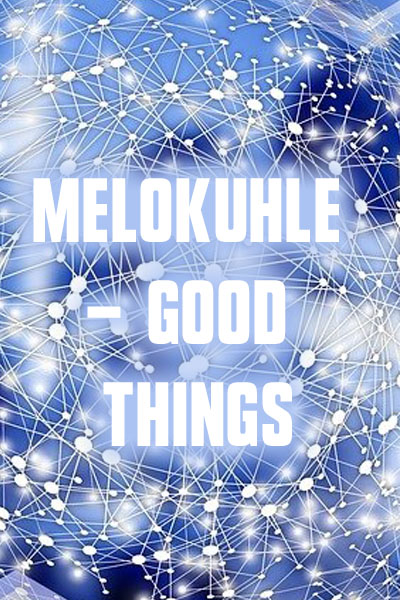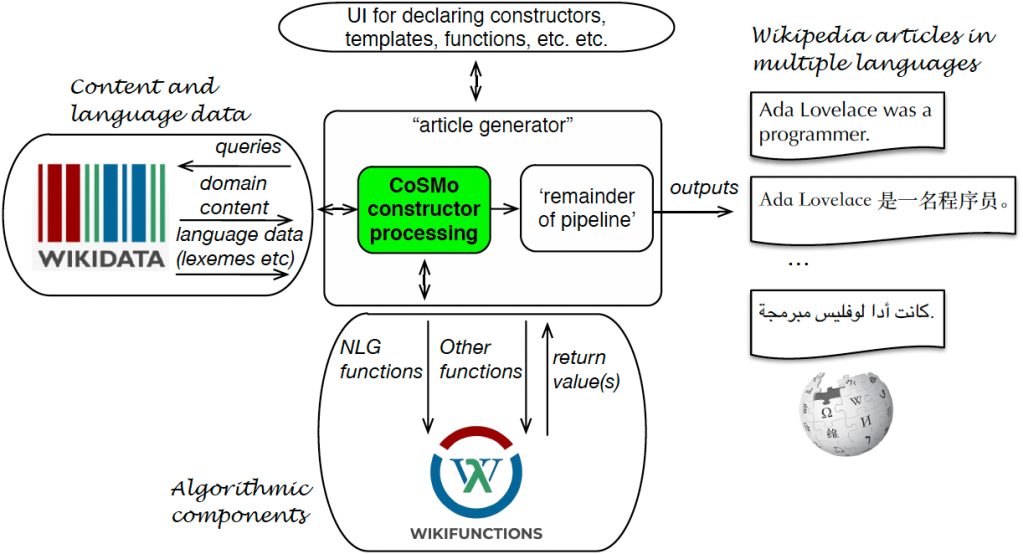(everyday ontology #2, informal musings on everyday objects)
If we have a pizza and put, say, pineapple on top of it, is it still a pizza? If you ask an Italian, the answer is a resounding “NO!”; one can’t have fruit on a pizza, but vegetables are permitted. This begs the question: what makes a pizza a pizza? And, to be fair: what is fruit and what is a vegetable?
I have seen peculiar toppings on edibles that were sold as pizza. Kebab meat, shawarma, spare ribs, and whatnot. The Debonairs pizza chain in South Africa sells a “Cram-Decker” pizza where the crust contains two chicken cheese grillers (sausages in the dough of the rim of the pizza) – I did not even bother to ask my Italian colleagues whether that’s fine. My distinct impression is that outside of Italy, a pizza is a thing that consists of a plate-sized, thin, round, yeast-based dough baked in the oven with a topping starting with tomato sauce and then other edibles added to it subject to the inventiveness of the cook and adjusted to the taste of the local population.

The key issue is the claim that “a pizza does not have fruit as topping”, or, if you will, “no pizza has fruit as topping”, or “a pizza has toppings that are not fruit” – they’re not logically equivalent statements, but let’s not squabble about that, for now.
I, among other people, have retorted to fellow Italian ontologists that, yes, most pizzas in fact do have fruit as topping: tomato. But somehow the tomato doesn’t count in their view; it’s supposedly a vegetable because in the context of the kitchen tomatoes are used in recipes where one expects vegetables to play their part. Biologically, however, tomato sure is a fruit. Now what? We can explore a number of avenues…
Setting precedents?
The squabbles about tomatoes were recorded already in the Nix v. Hedden case at the Supreme Court of the USA, in 1893. Arguments were put forward to determine whether a tomato is a fruit or vegetable, principally because vegetables were subject to import duties and fruit was exempt. In that court, common parlance usage and collecting taxes prevailed over a ‘does it have seeds’-test.
What is common usage? A fruit surely does not cease to be fruit just when it’s brought into the kitchen, also in Italy; consider, e.g., strudel di mele with apple as a sweet treat and the pears in the pear-walnut-gorgonzola salad of a main meal, presumably a savoury side-dish. Is the humble tomato the exception to the rule? No, but that may become evident only when we unpack the ‘fruit’ vs ‘vegetable’ issue.
Biologically, a fruit is “fleshy or dry ripened ovary of a flowering plant, enclosing the seed or seeds.” Not only those pears are fruit, but also cucumbers, pumpkins, aubergines, courgettes, peppers, green (string) beans, and maize (corn), to name but a few. A pineapple is a composite fruit, based on multiple flowers growing together (artichokes are flowers, as is broccoli, by the way). I have seen aubergines and peppers on Italian pizzas in Italy as well, so the issue extends well beyond the emblematic tomato.
What science and industry make of it
There’s a journal called International Journal of Vegetable Science. They should know. In 2021, the editor Vincent Russo wrote an editorial and he started it deadpan with “There is some confusion associated with the journal title.” An in-between the lines reading suggests he’s fed up having to reject out-of-scope papers because the authors don’t get the point of what a vegetable is. “Botanically a vegetable is anything that is not the reproductive portion of the plant derived from a flower.” he states, but also that weeds and herbs are a bit borderline, for the journal at least, whereas others—including our tomato—“are botanically fruit but have been through misuse of the term, and through court decisions, have come to be considered vegetables.”
Kathy Wolfe of Washington State University wrote up an accessible introductory overview on vegetables, fruits, and nuts and added a list of informal further reading. Spoiler alert: it complicates the issues. The FoodON food ontology went the other way with vegetable, copying over the first sentence on the Wikipedia page: “Vegetables are parts of plants that are consumed by humans or other animals as food.”; consequently, fruits are vegetables. The Plant Ontology takes the scientific stance on fruit and thus also on the tomato; it doesn’t contain the term ‘vegetable’.
There’s also a World Vegetable Centre that states early on that “There is no botanical definition of a vegetable.” They go on providing properties against which to test: is it eaten during the main part of the meal vs a snack or dessert? Is it sweet vs not sweet? And not a root crop (like potato, which are starchy vegetables)? Let’s take that sweetness criterion: lemons are definitely fruits from the culinary viewpoint, yet have a lower sugar content than tomatoes (2.5g vs 2.63g/100g according to the FDA), pumpkin with 2.8g/100g is used in both sweet and savoury dishes, eggplant with 3.5g of sugar is distinctly on the vegetable side of dishes. And so sweetness as measured by sugar content is not a viable option to distinguish a fruit from a vegetable. The world vegetable centre’s final proposal: “Based on the above considerations, we propose to define vegetables as mostly herbaceous annual plants of which some portion is eaten, either cooked or raw, during the principal part of the meal to complement starchy food and other food items.” (boldface in the original) Immediately thereafter, they tear it down themselves for its failings to capture the nuances both due to culture (potatoes are considered vegetables in some Asian cuisine) and the same thing can be considered either a fruit or a vegetable depending on the level of maturity (papayas and mangoes). Classifying by either of these properties would make for an awkward ontology at best.
A linguistic analysis is not going to resolve it either
It’s easy to take a convenient stroll into language if the language is English. A fruit is the fruiting body and the word ‘vegetable’ is similar to the word ‘vegetative’, as in non-reproductive part of the plant. In Dutch, it’s fruit and groente ‘greens’ and in Spanish it’s fruta and verdura ‘greens’, respectively, but not all vegetables are greens and some fruits are green. Etymologically, fruit’s origin is in Latin, from frug- and frui, and vegetable in Indo-European languages is claimed to refer to notions of green or growing. The German Gemüse, however, comes from Mus and ‘meal from (chopped) plants-of-some-use’. In isiZulu, the largest language by first language speakers in South Africa and in a different language family, isithelo translates to ‘fruit’, ‘product’ and ‘results’, with a root –thel- referring to blossom(ing), bringing forth, bearing (fruit), (paying) taxes and the like. Umfino is one translation for vegetable,with the root word the same. My Dent and Nyembezi hardcopy dictionary also offers uhlaza for vegetable, which is back-translated into ‘plant life’, ‘green grass,’ ‘greenness’, and ‘dagga’. Its versatile root –hlaz- has completions also into nouns and verbs in what seems to be quite different concepts (e.g., inhlazo ‘disgraceful event’). If anything, the German and isiZulu notions lean toward aforementioned FoodON and Wikipedia entry.
Should we create two ontologies?
What if we were to resolve it as two ontologies: one that respects the scientific approach with botany, the other a culinary one with the multiple classification issues as a to-be-determined loose end? As if they—biology and culinary—were two different languages and the same things classified differently, alike beer in English is a drink and in Dutch an animal (a bear) and burro being butter or a donkey (more examples here), but then not for strings of characters but objects. Ontologically, this is entirely unsatisfactory. It is not the case that both viewpoints are right or both contexts equally valid—Ontology, the one with the capital O, analytic philosophy, seeks the one nature of the entity.
The kitchen ontology is untenable. It lacks principles of objects exhibiting the same sets of properties as being the same type of thing. Culture, ripeness, sweetness, time and context of eating as a criterion all have their issues.
Changing a definition
Should we abandon the pursuit of defining fruit and vegetable, as it seems like an endless debate? Meh. Moreover, why should unscientific kitchen gut feeling to rule in an ontology? It should not. In analogy: does speaking ‘kitchen French’ trump the diktats of the Académie Française and do all potions trump medicine? No. What would be so bad about educating people about the food they eat, where it comes from, and how it’s grown? Nothing. So why should pre-scientific notions about food, and a dash of the courts, trump botany? It doesn’t matter that what we put in a meal salad or on top of a pizza is a fruit, nor, for that matter, that the pizza dough is actually also made of a fruit (wheat grains are fruits). We’ll continue eating it all the same anyway – with more appreciation.
Perhaps what is at play is merely the fear of pizza ending up like the extremely versatile pancake. That can be easily addressed with a simple tweak to the definition of pizza, alike: a pizza is a savoury dish that consists of a plate-sized, thin, round, yeast-based dough baked in the oven with a topping starting with tomato sauce and then other edibles added to it subject to the inventiveness of the cook and adjusted to the taste of the local population.
One might argue over other edibles as pizza toppings, but as to the question in the title: the answer is thus ‘yes’…
If you have better suggestions, feel free to propose them in the comments! I have no doubt readers will have their opinion on the matter 🙂
















